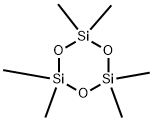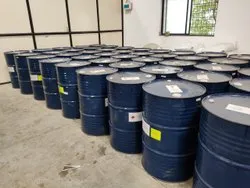Hexamethyldisilane
Synonym(s):Hexamethyldisilane
- CAS NO.:1450-14-2
- Empirical Formula: C6H18Si2
- Molecular Weight: 146.38
- MDL number: MFCD00008258
- EINECS: 215-911-0
- SAFETY DATA SHEET (SDS)
- Update Date: 2025-09-25 17:15:13

What is Hexamethyldisilane?
Chemical properties
Colorless clear liquid
The Uses of Hexamethyldisilane
Hexamethyldisilane acts as a silylating reagent for allylic acetates, aryl halides and diketones. It is a source material for vapor deposition during silicon carbide growth. It is also used in electronic and semiconducter industries.
What are the applications of Application
Hexamethyldisilane is an important silane protective agent, which can synthesize sodium trimethylsilane, potassium trimethylsilane and lithium trimethylsilane.
Preparation of iodotrimethylsilane.
Used as trimethylsilane anion reagent.
silylating or reducing reagent in combination with a Pd catalyst or a nucleophile.
Replaces aromatic nitriles with TMS groups in presence of [RhCl(cod)]2.
Precursor for CVD of silicon carbide.
Brings about the homocoupling of arenesulfonyl chlorides in the presence of Pd2(dba)3.
Used as a solvent for the direct borylation of fluoroaromatics.
Reacts with alkynes to form siloles.
Undergoes the silylation of acid chlorides to give acylsilanes.
Preparation
Hexamethyldisilane is produced by the reaction of methyl Grignard reagent with methylchlorodisilanes. This reaction is normally conducted in the presence of an ether such as diethyl ether, ethyl propyl ether, THF and the like.
Fire Hazard
Hexamethyldisilazane (HMDZ) is a highly flammable liquid and vapour.
HMDZ liquid is lighter than water and may float on water, spreading material during fire fighting. Leaking material or fire runoff to sewer may create fire or explosion hazard.
HMDZ vapours are heavier than air and can accumulate to form explosive concentrations. The vapours may also spread a considerable distance to a source of ignition, and flash back towards the source.
HMDZ reacts with water to form ammonia.
HMDZ is a non-conductor and, therefore, can accumulate static electrical charges when processed, handled or dispensed. HMDZ's flash point is 52 to 53°F, closed cup, for "pure" material.
Purification Methods
The most likely impurity is trimethylchlorosilane (cf boiling point). Wash it with H2O, cold conc H2SO4, H2O again, then aqueous NaHCO3, dry over CaSO4 and fractionate at atmospheric pressure. [Brown & Fowles J Chem Soc 2811 1958.] A grossly impure sample (25% impurities) was purified by repeated spinning band distillation. This lowered the impurity level to 500ppm. The main impurity was identified as 1-hydroxypentamethyldisilane. [Beilstein 4 IV 4277.]
Properties of Hexamethyldisilane
| Melting point: | 9-12 °C (lit.) |
| Boiling point: | 112-114 °C (lit.) |
| Density | 0.715 g/mL at 25 °C (lit.) |
| refractive index | n |
| Flash point: | 29 °F |
| storage temp. | Store at <= 20°C. |
| solubility | sol common organic solvents; insol H2O. |
| form | liquid |
| color | colorless |
| Specific Gravity | 0.729 |
| Water Solubility | Insoluble in water. Soluble in alcohol, ether and acetone. |
| Hydrolytic Sensitivity | 1: no significant reaction with aqueous systems |
| BRN | 1633463 |
| Stability: | Volatile |
| CAS DataBase Reference | 1450-14-2(CAS DataBase Reference) |
| NIST Chemistry Reference | Disilane, hexamethyl-(1450-14-2) |
| EPA Substance Registry System | Disilane, hexamethyl- (1450-14-2) |
Safety information for Hexamethyldisilane
| Signal word | Danger |
| Pictogram(s) |
 Flame Flammables GHS02  Exclamation Mark Irritant GHS07 |
| GHS Hazard Statements |
H225:Flammable liquids H317:Sensitisation, Skin H319:Serious eye damage/eye irritation H335:Specific target organ toxicity, single exposure;Respiratory tract irritation |
| Precautionary Statement Codes |
P210:Keep away from heat/sparks/open flames/hot surfaces. — No smoking. P280:Wear protective gloves/protective clothing/eye protection/face protection. P302+P352:IF ON SKIN: wash with plenty of soap and water. P305+P351+P338:IF IN EYES: Rinse cautiously with water for several minutes. Remove contact lenses, if present and easy to do. Continuerinsing. |
Computed Descriptors for Hexamethyldisilane
| InChIKey | NEXSMEBSBIABKL-UHFFFAOYSA-N |
Hexamethyldisilane manufacturer
New Products
Indole Methyl Resin tert-butyl 9-methoxy-3-azaspiro[5.5]undecane-3-carboxylate Boc-His(Boc)-OH 2-CTC Resin 4-Chloro-7-tosy1-7Hpyrrolo[2,3-d]pyrimidine 5,7-Dibromo-1H-indole 2,5-dichloro-N-hydroxy-4,6-dimethylpyridine-3-carboximidamide 2,2-Dimethoxy-7-azaspiro[3.5]nonane hydrochloride 4-chloromethyl-5-methyl-1,3-dioxol-2-one (DMDO-Cl) R-2-BENZYLOXY PROPIONIC ACID 1,1’-CARBONYLDIIMIDAZOLE 1,1’-CARBONYLDI (1,2-4 TRIAZOLE) N-METHYL INDAZOLE-3-CARBOXYLIC ACID 4-((2-hydroxyethyl)thio)benzoic acid 1-(TERT-BUTOXYCARBONYL)-2-PYRROLIDINONE Methyl 6-methylnicotinate 3-Pyridineacrylic acid tert-Butyl carbazate TETRAHYDRO-2H-PYRAN-3-OL 2-((4-morpholinophenylamino) (methylthio) methylene) malononitrile 3-(4-morpholinophenylamino)-5-amino-1H-pyrazole-4-carbonitrile 2,4-dihydroxybenzaldehyde 1,3-Diethyl-1,3-Diphenylurea Methyl 2-methylquinoline-6-carboxylateRelated products of tetrahydrofuran








You may like
-
 Hexamethyldisilane 99%View Details
Hexamethyldisilane 99%View Details
1450-14-2 -
 Hexamethyldisilane CAS 1450-14-2View Details
Hexamethyldisilane CAS 1450-14-2View Details
1450-14-2 -
 Hexamethyldisilane, 98% CAS 1450-14-2View Details
Hexamethyldisilane, 98% CAS 1450-14-2View Details
1450-14-2 -
 Hexamethyldisilane 97% CAS 1450-14-2View Details
Hexamethyldisilane 97% CAS 1450-14-2View Details
1450-14-2 -
 Hexamethyldisilane 99% (GC) CAS 1450-14-2View Details
Hexamethyldisilane 99% (GC) CAS 1450-14-2View Details
1450-14-2 -
 Hexamethyldisilane CAS 1450-14-2View Details
Hexamethyldisilane CAS 1450-14-2View Details
1450-14-2 -
 Hexamethyldisilane CAS 1450-14-2View Details
Hexamethyldisilane CAS 1450-14-2View Details
1450-14-2 -
 Hexa Methyl Di SilaneView Details
Hexa Methyl Di SilaneView Details
999-97-3
